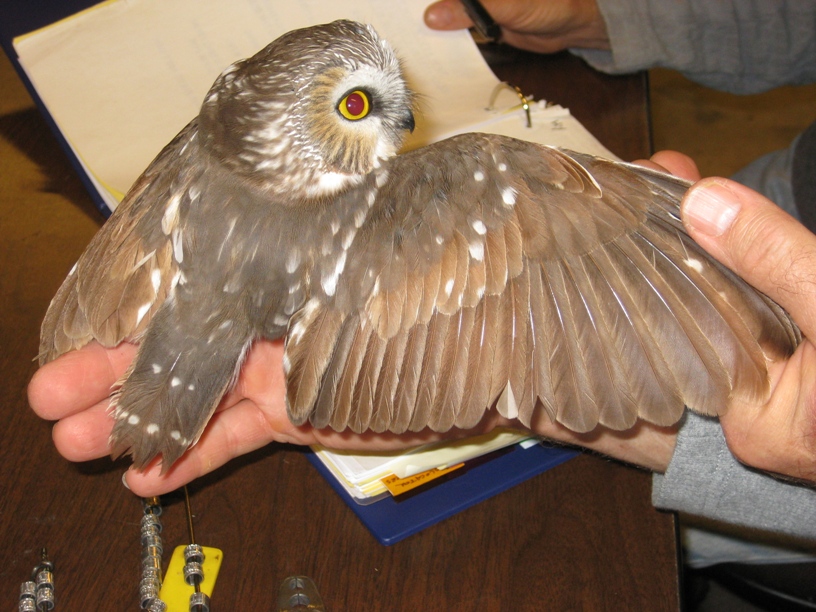
One of the more common anomalous molt variants seen in saw-whet owls, in which the evenly faded flight feathers and greater/primary coverts contrast with the fresh, replaced median and lesser covs, body plumage and rectrices. In this case, one inner secondary has also been replaced. (©Karl Kleiner)
The age class after-hatching-year (AHY) simply means “a bird known to have hatched before the calendar year of banding, year of hatch otherwise unknown.” (North American Banding Manual vol. 1) If a more precise age, e.g SY or ASY, can be determined from molt, it should be used, although strictly speaking, AHY can be applied to any non-HY owl.
AHY should be used for several anomalous molt patterns that banders occasionally encounter, however. One of the more common variants, sometimes known as “two-tone HY with a new tail,” is a saw-whet encountered in autumn, winter or spring with evenly faded and worn primaries, secondaries and greater/primary coverts, which contrast with fresh, replaced body plumage, median and lesser coverts, and rectrices. Such owls are presumed to be individuals (probably SYs) that suspended flight feather replacement during their prebasic molt, while replacing other plumage as normal.
While such birds could be aged U for unknown, they clearly cannot be HY, and so should more properly be aged as AHY – adult of unknown age.
